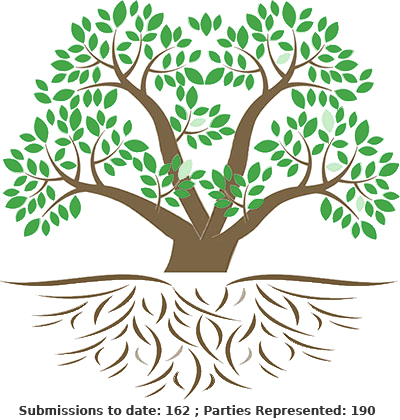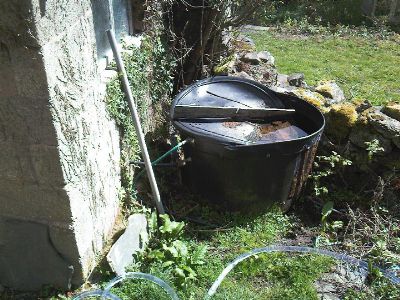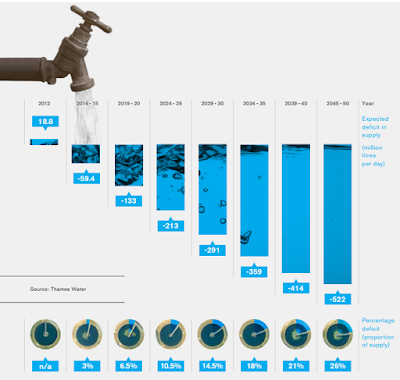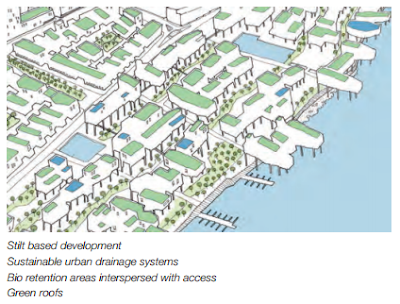Climate change and population growth, in particular urban populations, are increasing pressure on water resources and the water environment. By 2050 86% of the population of OECD countries will be living in cities. There is an increasing recognition of the need for Integrated Water Management. This should be multi-disciplinary and ensure we are managing all aspects of water together (water quality, availability, flooding etc.) while delivering multiple benefits through planning and liveable cities. Many approaches were presented and discussed at the International Water Association's Efficient 2015 conference in April 2015.
The international Water Association is leading development an Urban Water Charter. This provides the opportunity to discuss some of these questions and ensure we join up water, planning and urban development for liveable and resilient cities. In the UK the Water Resources Planning Guideline currently out for consultation enables more flexible and risk based approaches to planning that could support a transition towards integrated water resources planning. This also fits with the call for improved wastewater and drainage planning from the Ofwat resilience taskforce.
Below I outline a range of models and ask questions of how we can best use these for sustainable water management. But one to start with is - Are we confusing stakeholders by the many names we give to these approaches or does this make them more relevant for specific geographies?
The international Water Association is leading development an Urban Water Charter. This provides the opportunity to discuss some of these questions and ensure we join up water, planning and urban development for liveable and resilient cities. In the UK the Water Resources Planning Guideline currently out for consultation enables more flexible and risk based approaches to planning that could support a transition towards integrated water resources planning. This also fits with the call for improved wastewater and drainage planning from the Ofwat resilience taskforce.
Below I outline a range of models and ask questions of how we can best use these for sustainable water management. But one to start with is - Are we confusing stakeholders by the many names we give to these approaches or does this make them more relevant for specific geographies?
Water transition models/ new paradigms
Some of the many names being proposed for integrated water management approaches are outlined below (WERF, 2015) and I outline a selection of these:
- Regenerative infrastructure
- Integrated water resource management
- Water sensitive urban design
- Integrated resource planning
- Integrated regional water management
- Total water cycle management
- Integrated urban water management
- Blue Cities
- One Water
- Whole water
Water Sensitive Cities
The transition to water sensitive cities is being promoted by the International Water Association and is
supported through Water Sensitive Urban Design delivery. Water Sensitive Urban Design (WSUD) is
the process of planning and engineering the built environment through urban design to integrate with
water-cycle management to help manage stormwater, prevent flooding and improve water quality.
WSUD aims to encourage harmony between water and the community and create attractive, functional
and sustainable surroundings for local people and the environment. Taking a holistic approach to
managing water in urban areas, WSUD focuses on the management of water supplies, surface water
and waste water, and also helps to build resistance against climate change.
 |
| Transition approach to Water Sensitive Cities - compares UK and Australia (CIRIA, 2013) |
 |
| Key factors and GLA role in enabling the transition to a Water Sensitive City |
Four generations of water infrastructure
A further conceptual approach incorporating elements of service innovation has been presented by the Institute for Sustainable Futures in Sydney. This associates the relative cost per household of water infrastructure provision with a certain generation of water infrastructure. The third generation in particular focuses on alternative but centralised supply options such as desalination or wastewater reuse. In Australia, the high cost associated with such options was justified by the short time-frame in which to make planning decisions to address the Millennium Drought (1995-2012). However, the fourth generation focuses on integrated service provision and customer service, with the aim of meeting multiple objectives. For example, green infrastructure could be regarded as fourth generation as it can deliver water saving, stormwater management, heat island mitigation and health benefits, which have been realised in projects such as the Olympic Park in London. More examples are in my post on financing the fourth generation of infrastructure.
 |
| Relative cost per household for different generations of water infrastructure (White and Turner, 2014) |
OneWater
Another approach published in 2015 by the Water and Environment Research Foundation is "One Water". The definition of this is below (see full report):
"The One Water approach considers the urban water cycle as a single integrated system, in which all urban water flows are recognized as potential resources, and the interconnectedness of water supply, groundwater, stormwater and wastewater is optimized, and their combined impact on flooding, water quality, wetlands, watercourses, estuaries and coastal waters is recognized."
"The One Water approach considers the urban water cycle as a single integrated system, in which all urban water flows are recognized as potential resources, and the interconnectedness of water supply, groundwater, stormwater and wastewater is optimized, and their combined impact on flooding, water quality, wetlands, watercourses, estuaries and coastal waters is recognized."
In describing this for WERF a number of case studies were presented to demonstrate:
- Planning and partnerships
- Legislation and regulations
- Economics and finance
- Culture, knowledge & capacity
- Citizen and stakeholder engagement
Future Cities UK
The UK Water Partnership and the Foresight programme jointly
produced "Future Visions for Water and Cities: A thought piece". This
developed five visions on how cities may manage the water cycle better in the
year 2065:
- "Vision 1 – Green Food & Garden Cityscapes: More food is grown both in and on buildings, while water sensitive urban design management plays a pivotal role.
- Vision 2 – Flood-proof Cities: Existing cities and new city areas floating on stilts are designed to withstand sea-level rise, extreme rainfall and expansion of river floodplains.
- Vision 3 – Smart Homes & City Networks: Using the internet, appliances, networks and data-hubs interact to ensure optimal management of water supply and demand.
- Vision 4 – Cities & the Underworld: Deep geology beneath cities is harnessed to house combined systems delivering effective drainage, water, heating and cooling services.
- Vision 5 – Community Transition Cities: Utility run programmes change communities’ water-related habits and practices by ‘transitioning’ these to a more sustainable level."
I attended a workshop on this in June 2015 in London and
wrote a blog on the approach. In summary though, the workshop supported greater
debate within the water community and a recognition of the need to focus on
cities. However, there is a need for this to integrate with existing
initiatives such as the 100 resilient cities project and C40 cities so that
water can be an enabler of wider social and economic transformations.
Blue Cities
The Canadian approach is "Blue Cities" and this has developed out of the Blue Economy Initiative. The report from this initiative was developed based on interviews with 17 subject matter experts and thought leaders. Their vision for a water sustainable city includes:
- Water is visible and valued
- A culture of conservation exists
- Responsibility is shared
The approach is then developed around essential innovations and making the business case. As with the OneWater approach the input of experts and case studies provides a practical aspect to the transition outlined towards a Blue City.
Conclusions
There is a need for innovation and a transition to new ways of managing water. Many approaches are being developed internationally, however questions arise in terms of how joined up they are and how we can best apply them:
- Do we need to agree a consistent message on transition to integrated water management approaches to ensure both the water management community and our wider stakeholders can take this vision forward?
- How can we best communicate these to change water resources management plans and business planning in the UK between now and 2019?
- What are the common elements for transition? What can we learn from partnership working and business cases developed across many different countries?
The international focus is increasingly on urban water management with a city scale. As has been recognised with climate change (e.g. C40 cities programme) this could be a scale at which we can achieve greater stakeholder engagement from water companies, local authorities, the private sector and communities towards more sustainable water management approaches.























